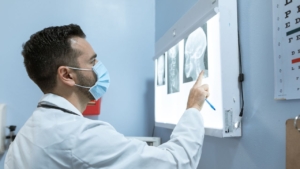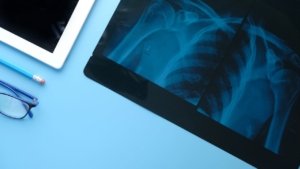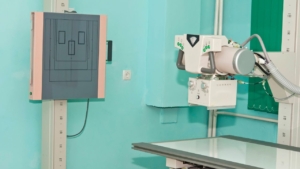Key Takeaways
- AI-powered imaging tools are transforming diagnostics by offering faster and more accurate disease detection.
- 3D and 4D imaging solutions are revolutionizing surgical procedures with detailed, real-time views of the body.
- Portable and wearable imaging technologies are making diagnostics more accessible in remote and real-time health monitoring.
- Advances in MRI, CT, and ultrasound have improved image resolution and scan speed, leading to faster, clearer diagnostics.
- Streamlined imaging workflows from these innovations are reducing patient wait times and improving overall healthcare efficiency.
How far can innovation in medical imaging go in transforming the way we see healthcare? The truth is that every advancement in medical imaging technology helps save lives.
It’s easy to overlook the role of these breakthroughs, but without cutting-edge tools, diagnosing diseases or planning treatment would be far less efficient—and sometimes far less accurate.
Let’s take a closer look at how the latest innovations in medical imaging are reshaping healthcare operations, highlighting the importance of staying ahead in this fast-evolving landscape.
The Evolution of Medical Imaging: More Than Just Pictures
When most of us think about the medical imaging industry, we might imagine an X-ray or an MRI scan. But medical imaging has come a long way.
Today, imaging technology advancements are revolutionizing how doctors diagnose and treat patients, offering incredibly detailed images that reveal everything from the smallest tumor to the health of your blood vessels.
One of the most exciting areas in medical imaging innovation is AI-powered diagnostics. Algorithms can now analyze medical images faster than the human eye, catching subtle abnormalities and improving accuracy in diagnoses. This doesn’t replace doctors—it enhances their ability to make life-saving decisions with more precision and speed.
Cutting-edge medical imaging solutions, like 3D imaging and augmented reality, now give surgeons a more comprehensive view of the human body, making complex surgeries safer and more efficient. It’s incredible to think that the future of surgery could involve virtual models that let doctors “practice” before making a single incision.
Healthcare Technology Trends Driving Change
To keep up with healthcare technology trends, hospitals and clinics must continually invest in the latest diagnostic imaging improvements. These trends include everything from portable ultrasound devices that bring care to remote areas, to wearable imaging technologies that monitor a patient’s health in real time.
What’s driving these trends? It’s partly the increasing demand for personalized care. Patients expect their treatments to be as tailored to their unique health profile as possible. And it’s also about efficiency—getting results faster so that treatment can begin sooner.
For hospitals and healthcare providers, staying competitive means keeping up with these innovations. That’s why a close partnership with a medical imaging products supplier like Spectrum Medical Imaging Co. is so vital. Having access to the latest medical imaging developments ensures that patients receive the best care possible.
Key Innovations in Medical Imaging That Are Changing Healthcare
So, what are the most impactful latest medical imaging developments?
- AI and Machine Learning: As mentioned earlier, artificial intelligence is transforming medical imaging. AI-powered software can interpret scans more quickly and accurately than a human, potentially identifying diseases before symptoms even arise.
- 3D and 4D Imaging: Not too long ago, 3D imaging seemed futuristic. Now, it’s here and even evolving into 4D. These advancements are critical for procedures like heart surgery, where a clear and comprehensive view of the area is needed.
- Portable Imaging Devices: Imagine having the ability to diagnose patients in the most remote locations without transporting them to a hospital. Portable imaging devices like handheld ultrasounds are making this a reality.
- Wearable Imaging: Wearable technology is no longer just about fitness tracking. New imaging devices that can be worn by patients are opening up possibilities for continuous monitoring and real-time data collection. This is especially useful in tracking chronic conditions like cardiovascular disease.
How Innovation in Medical Imaging Boosts Efficiency
It’s not just about diagnostics. Medical imaging innovation is streamlining healthcare operations across the board. For example, faster and more accurate imaging means that healthcare professionals can treat more patients in less time, improving overall efficiency in hospitals and clinics.
By adopting cutting-edge imaging solutions, healthcare facilities reduce the number of follow-up appointments needed, minimizing patient wait times and stress. Fewer retakes on imaging tests mean fewer delays in treatment plans.
Innovations like AI-enhanced imaging also allow radiologists to focus more on patient care rather than spending time poring over scans. It’s a win-win for both healthcare providers and patients.
Diagnostic Imaging Improvements: More Than Meets the Eye
The year 2024 has brought significant advancements in the field of diagnostic imaging, revolutionizing how healthcare providers approach patient care. Here’s a closer look at the key diagnostic imaging improvements:
AI-Powered Imaging Tools
AI-powered imaging allows for faster, more accurate analysis of medical images. This imaging technology advancement helps detect diseases earlier and minimizes human error. AI systems can assist radiologists in spotting subtle anomalies that might be missed by the naked eye, leading to more precise diagnostics.
3D and 4D Imaging Solutions
The introduction of 3D and 4D imaging is providing more detailed, real-time views of the human body. These cutting-edge imaging solutions enhance surgical planning and execution, leading to safer, more precise procedures. Surgeons can visualize the entire surgical area, reducing complications and improving patient recovery times.
Portable and Wearable Imaging Technologies
Portable imaging devices are bringing diagnostic capabilities to remote and underserved areas. Wearable imaging technologies allow continuous health monitoring, improving the ability to diagnose and track conditions in real time. These tools make diagnostics more accessible, providing immediate insights without requiring patients to visit a hospital.
Advancements in MRI, CT, and Ultrasound
MRI, CT, and ultrasound technologies have seen significant improvements in 2024, with better image resolution and faster scan times. These advancements allow for clearer, more detailed images, helping healthcare providers make more informed decisions. Faster imaging also means quicker diagnoses, allowing treatment to begin sooner, which can be critical in urgent medical cases.
Partner with Spectrum Medical Imaging Co. for Cutting-Edge Solutions
At Spectrum Medical Imaging Co., we provide healthcare facilities with the most advanced medical imaging equipment and support. As a trusted medical imaging products supplier, we help you stay ahead of the latest healthcare technology trends.
Contact us today to learn how we can bring the future of medical imaging to your organization.




